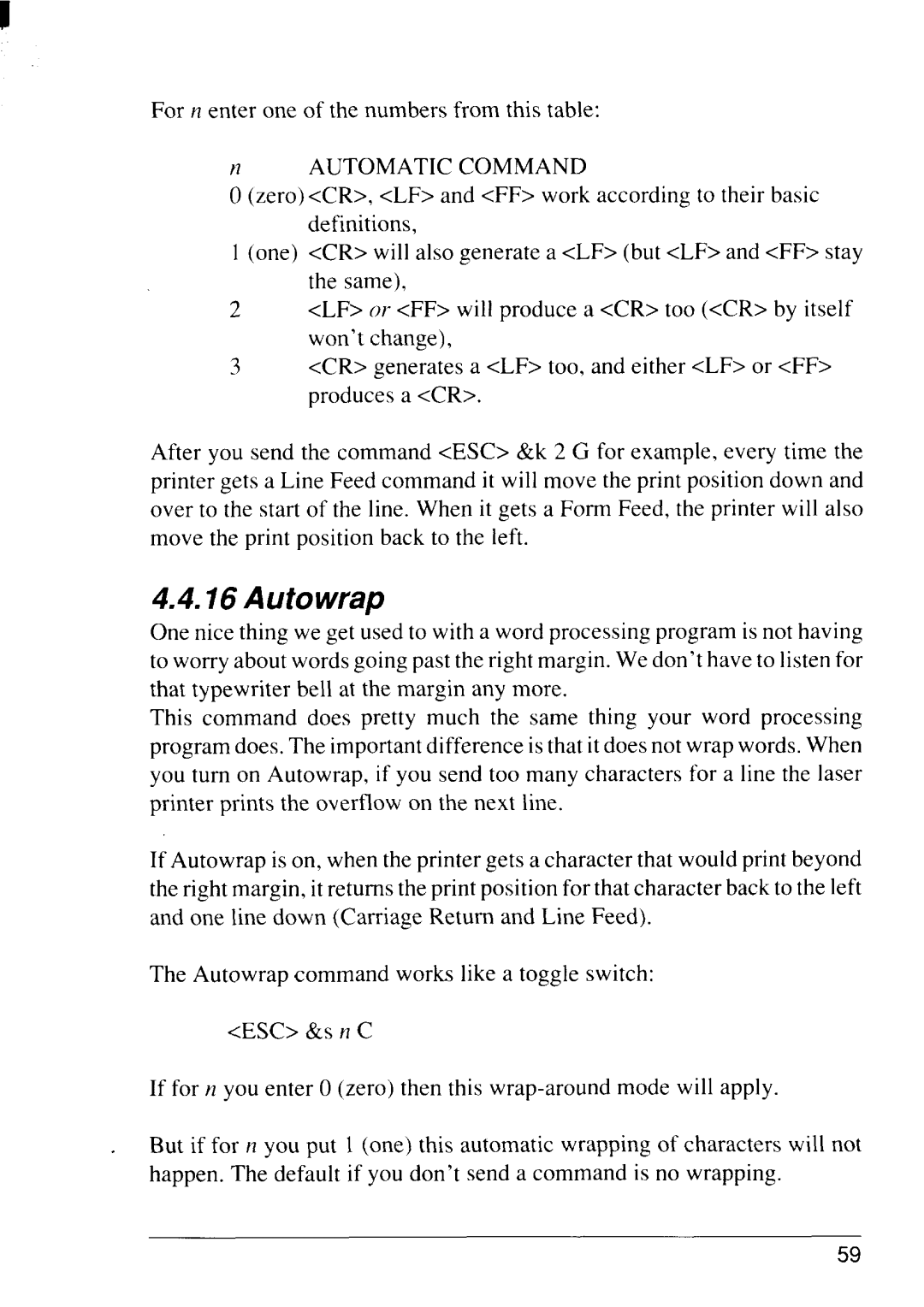
I
For n enter one of the numbers from this table:
n AUTOMATIC COMMAND
O(zero) <CR>, <LF> and <FF> work according to their basic definitions,
1 (one) <CR> will also generate a <LF> (but <LF> and <FF> stay the same),
2<LF> or <FF> will produce a <CR> too (<CR> by itself won’t change),
3<CR> generates a <LF> too, and either <LF> or <FF> produces a <CR>.
After you send the command <ESC> &k 2 G for example, every time the printer gets a Line Feed command it will move the print position down and over to the start of the line. When it gets a Form Feed, the printer will also move the print position back to the left.
4.4.16Autowrap
One nice thing we get used to with a word processing program is not having to worry about words going past the right margin. We don’t have to listen for that typewriter bell at the margin any more.
This command does pretty much the same thing your word processing program does. The important difference is that it does not wrap words. When you turn on Autowrap, if you send too many characters for a line the laser printer prints the overflow on the next line.
If Autowrap is on, when the printer gets a character that would print beyond the right margin, it returns the print position for that character back to the left and one line down (Carriage Return and Line Feed).
The Autowrap command works like a toggle switch:
<ESC> &S n C
If for n you enter O(zero) then this
But if for n you put 1 (one) this automatic wrapping of characters will not happen. The default if you don’t send a command is no wrapping.
59
